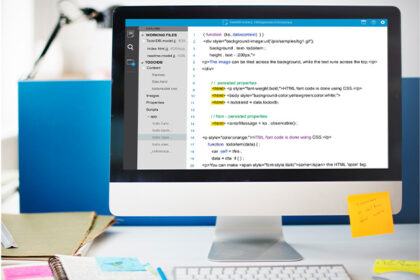Imagine typing a phrase or a few descriptive words and instantly hearing a melody that captures the mood, tone, or story behind them. This futuristic scenario is no longer just fantasy — text-to-music AI tools are here, reshaping the way we think about royalty free music creation.
Text-to-music AI represents a groundbreaking technology that blends natural language processing (NLP) with machine learning to transform written words into beautiful sonic compositions. This emerging field combines creativity and innovation, enabling music generation in ways we once only dreamed of. But how does this technology work, and why is it gaining so much attention? Let’s explore.
What Is Text-to-Music AI?
Text-to-music AI refers to software tools powered by artificial intelligence that convert written language into musical compositions. At its core, this technology uses advanced algorithms to analyze, interpret, and translate the meaning or emotion behind text into harmonious sounds, rhythms, and instrumentation.
Whether it’s generating a soothing piano tune from phrases like “calm and serene” or composing a high-energy beat inspired by “fast and exciting,” these tools make music creation accessible to professionals and novices alike. The result? A faster, more inclusive way to produce tailor-made music for diverse purposes.
How Text-to-Music AI Tools Work
Text-to-music AI tools start with processing the user’s input – the text. NLP algorithms decode the written language, extracting essential components like emotion, mood, and meaning. For example, the phrase “a nostalgic evening” might signal the need for slower tempos, softer instruments, and minor chords.
Mapping Text to Musical Elements
After analyzing the text, the AI maps its findings to various musical parameters, such as tempo, rhythm, melody, key, instruments, and structure. This process involves vast datasets that teach the AI to associate linguistic elements with corresponding sounds.
For instance:
- A word like “exciting” might translate to upbeat tempos and major scales.
- Descriptions such as “melancholic” may call for somber tones and slower pacing.
Machine Learning and Composition Models
Using deep learning models, the AI generates music in real-time. These models are trained on extensive libraries of musical genres, compositions, and audio recordings. Technologies like GANs (Generative Adversarial Networks) or RNNs (Recurrent Neural Networks) help the AI “understand” how to arrange notes, phrases, and dynamics coherently.
Refining Output Through Feedback
Some text-to-music tools allow users to tweak the final product by providing feedback. Adjustments, such as changing the tempo or adding specific instruments, enable creators to personalize the music further.
Applications of Text-to-Music AI Across Industries
Text-to-music AI tools are gaining traction in various sectors, demonstrating their versatility and potential to revolutionize traditional workflows. Here’s how different industries are leveraging this technology:
Entertainment and Media Production
Filmmakers, game designers, and content creators are using these tools to produce custom soundtracks quickly. For instance:
- Video game developers can generate adaptive music scores that shift with gameplay.
- Short-form content creators on platforms like TikTok or YouTube can create unique music tracks that enhance their storytelling without hiring a composer.
Marketing and Advertising
Brands leverage AI-generated music to create customized jingles, background scores, or mood-setting tracks for campaigns. The ability to align music with a brand message provides an edge in creating emotional connections with audiences.
Personal Creativity
Amateur musicians and hobbyists are finding new ways to explore their creative potential with text-to-music AI. These tools act as “digital partners” for individuals who may not have formal musical training but wish to create something expressive and original.
Therapeutic and Wellness Settings
Music has long been known for its therapeutic properties. With text-to-music AI, therapists and mindfulness practitioners can design soundscapes tailored to specific needs, such as relaxation, focus enhancement, or stress relief.
Examples of Popular Text-to-Music AI Tools
Several tools have emerged as forerunners in the text-to-music space, each bringing unique features to democratize music creation:
- AIVA is an AI composer widely used by creators to craft soundtracks for videos, ads, and games. It allows users to input specifications like mood descriptors or genres to create personalized compositions.
- Soundful helps brands and creators produce royalty-free AI-generated music by typing in descriptive inputs such as the desired tempo and style.
- Mubert specializes in generative audio and provides users with real-time music created from textual prompts, enabling completely customizable soundscapes.
- One of the pioneers in AI-driven music creation, Amper Music offers both pre-composed tracks and fully AI-generated music based on text inputs.
Each of these tools is part of a growing ecosystem that is redefining how we approach composition and creativity.
Final Thoughts
Text-to-music AI tools showcase the power of technology to enhance and expand the ways we create. Whether you’re a budding artist, a brand looking for unique audio, or simply curious about exploring creativity, these tools offer endless possibilities.
With continued advancements in machine learning and NLP, turning words into melodies may soon become a mainstream form of expression. One thing is certain — the intersection of text and music has never been more exciting, offering a whole new world of opportunities for creators everywhere.











